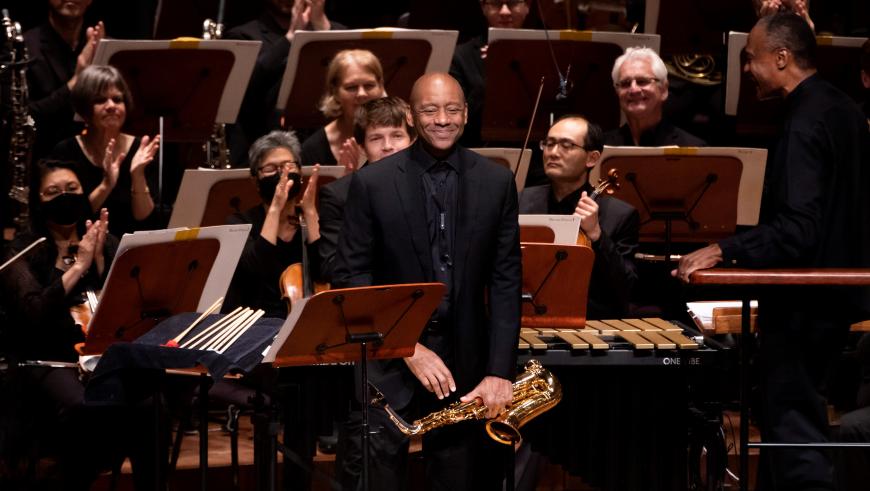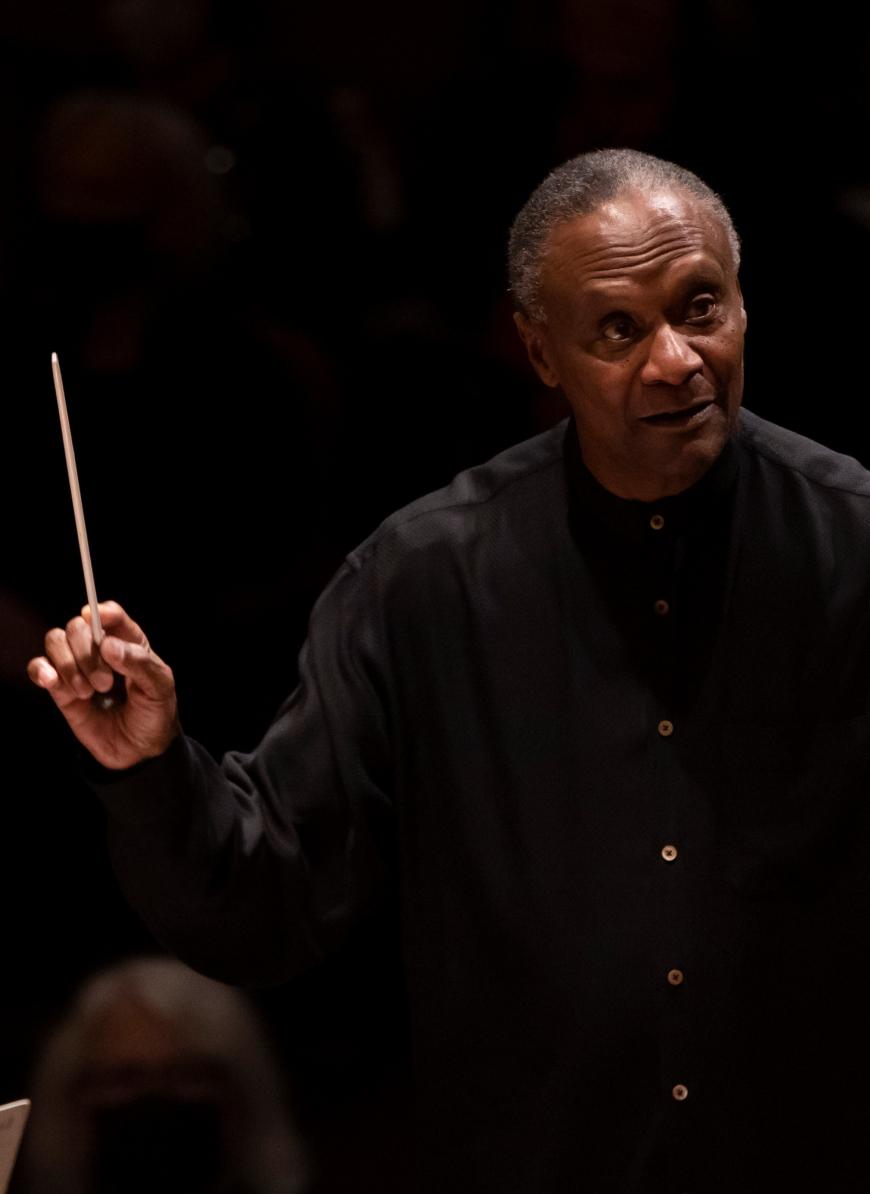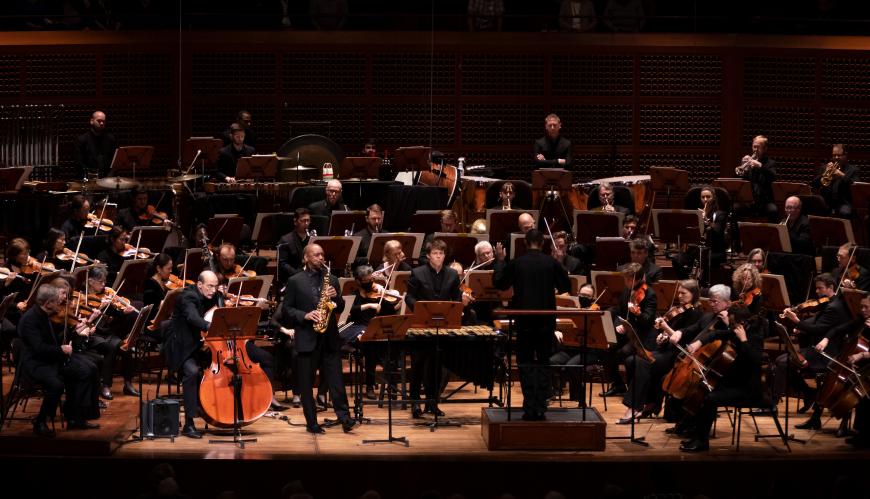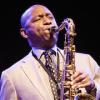
More than just about any other saxophonist on the planet, Branford Marsalis is game. Jam with the Grateful Dead? Hell yes. Navigate John Adams’s famously difficult Saxophone Concerto? He’s down. Premiere Gabriel Prokofiev’s Saxophone Concerto, which was written for him? But of course. A three-concert engagement at Davies Symphony Hall last week with the San Francisco Symphony conducted by Thomas Wilkins offered another opportunity to witness the eldest Marsalis sibling spread his wings on his first instrument, alto sax (not a horn he often plays in jazz settings).
The two pieces featuring Marsalis were sandwiched between high-energy works by Leonard Bernstein and Duke Ellington, starting with a spirited rendition of Three Dance Episodes from On the Town. On Friday, Wilkins’s confident and rhythmically assertive direction emphasized the music’s origins as a jazz-infused ballet score, with Bernstein at his most Gershwinesque.

The evening’s most anticipated piece, the SF Symphony premiere of Erwin Schulhoff’s Weimar-era Hot-Sonate, offered a fascinating look at how early jazz and ragtime inspired European composers. Marsalis has played the piece at least once before (in 2011 with the New York Philharmonic), and Wilkins seemed to prepare the Symphony well for the tricky syncopations. With its preponderance of low-end reeds and brass, Richard Rodney Bennett’s arrangement for 19 pieces gives the saxophonist a meaty foundation from which to alternately soar and slink.
Would the piece hold as much interest if it hadn’t nearly been lost after Schulhoff was banned as a “degenerate” artist by the Nazis, whose mistreatment lead to his death in 1942 at the age of 48? Maybe not, but in the hands of a well-prepared ensemble and Marsalis, it provided some powerful passages. In the bluesy third movement, the tuba and trombones voicings echo the palette that Gil Evans used so effectively on his Sketches of Spain collaboration with Miles Davis.
The Symphony wasn’t the only date on Marsalis’s San Francisco dance card. After playing Thursday’s Davies matinee, he made his way over to the SFJAZZ Center to join the gala celebrating SFJAZZ founder Randall Kline, who’s in the process of retiring from his position as executive artistic director. In an evening with one thrilling climax after another, Marsalis seized the moment with an exploratory soprano sax solo on Wayne Shorter’s “Armageddon,” slicing through the dense and kinetic dectet. He was just as effective when he stayed onstage for the next act, joining Rosanne Cash and John Leventhal to provide soprano sax counterpoint on a moseying mid-tempo version of Cash’s song “A Feather Is Not a Bird.”
Back at Davies on Friday, the evening’s high point was the SF Symphony premiere of Escapades, a piece gleaned from John Williams’s score for Steven Spielberg’s 2002 film Catch Me If You Can. Inspired by the orchestral jazz that was part of the 1950s and early-’60s setting of the film, Williams’s three-movement piece took on a vivid and often thrilling life of its own.

With his plush but rounded tone, Marsalis executed the emotional shifts with the control of a master editor, feeding off of the three-note vibraphone phrase that drives the action. The Symphony’s balanced sound and headlong momentum on “Joy Ride,” the concluding movement, reached almost giddy intensity.
Marsalis was missed for the concluding piece, Harlem (1950), Ellington’s symphonic portrait of a community he loved and often drew on for inspiration. The orchestration by Luther Henderson and Maurice Peress captures a good deal of Ellington’s sectional writing and love of plunger-mute growls. If the work doesn’t rank amongst Ellington’s masterpieces, it’s by turns sexy, playful, bawdy, and pulsing with oversized personalities. On a program demonstrating jazz’s ability to enliven symphonic settings over nearly a century, giving Ellington the final word made perfect sense.



